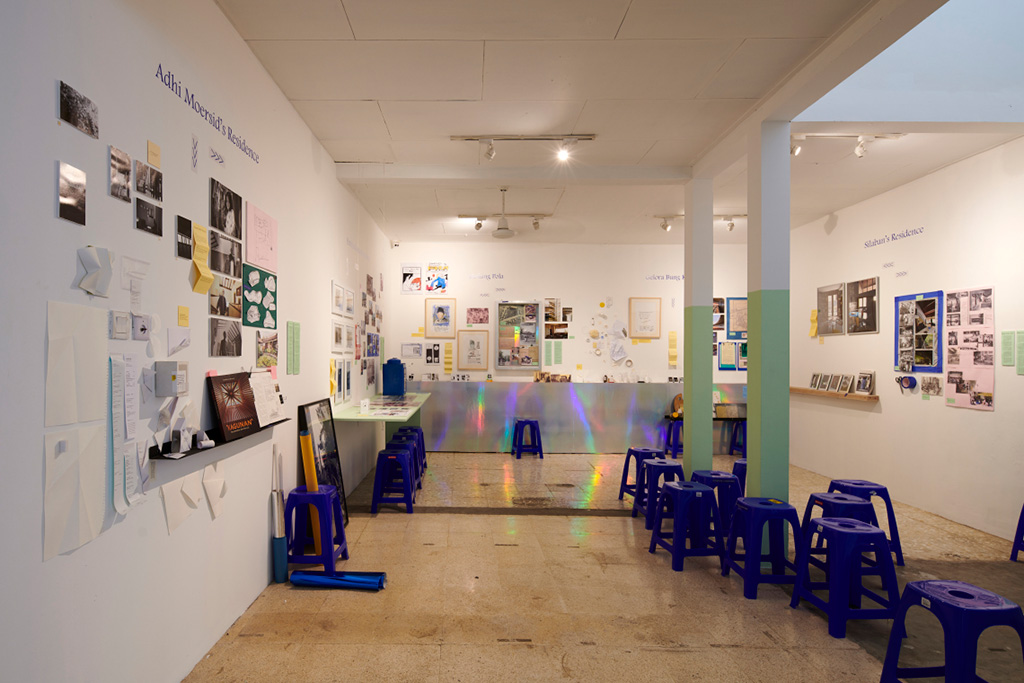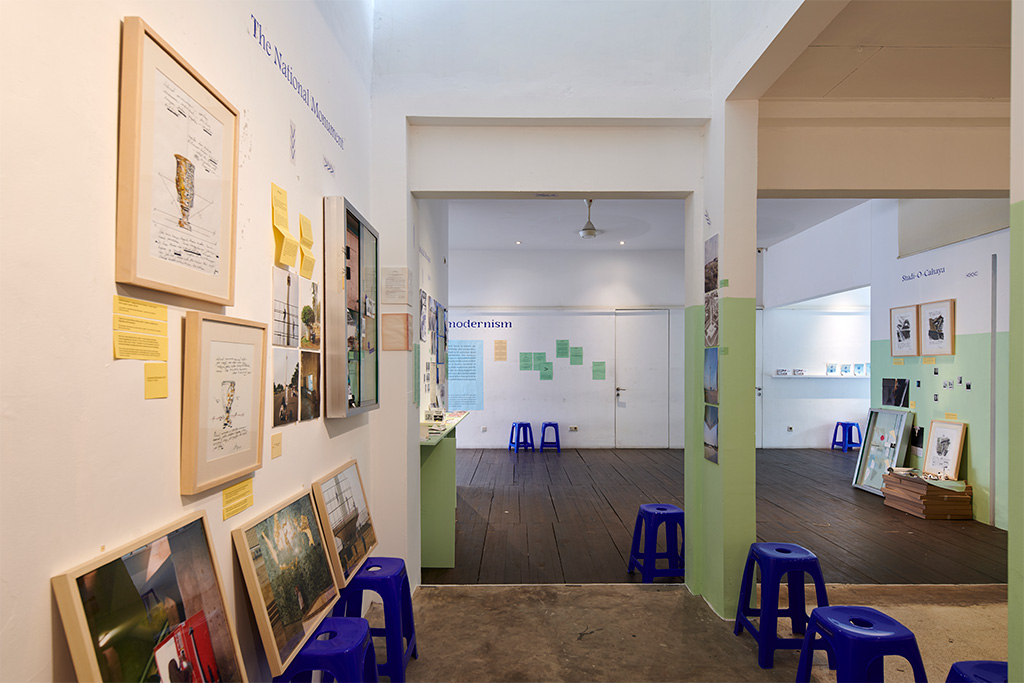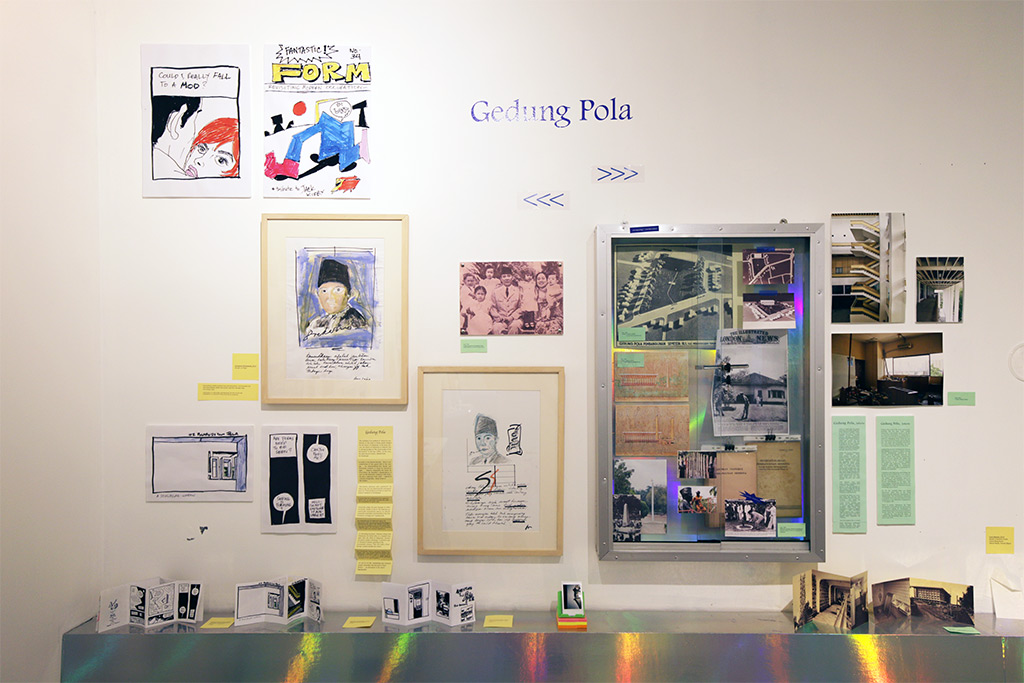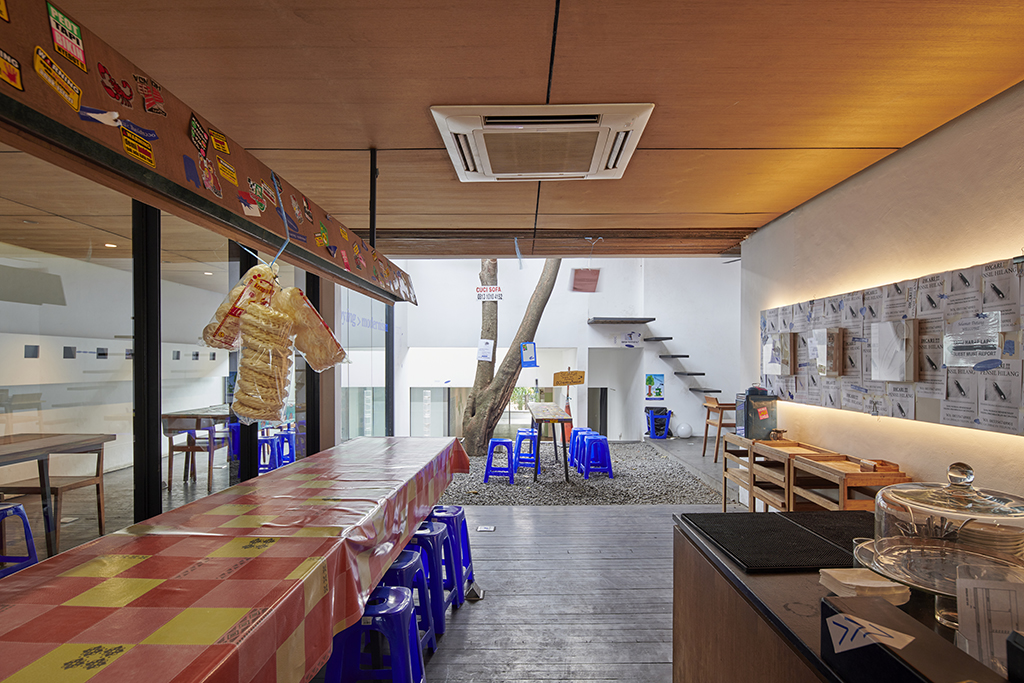
For the SEAM Space Jakarta, curators Avianti Armand and Setiadi Sopandi teamed up with Rifandi S. Nugroho to create the exhibition Occupying Modernism: Impressions on Indonesian Modernist Spaces.
The curators Avianti Armand and Setiadi Sopandi have made fundamental contributions to the perception of both historical modern architecture and contemporary architecture beyond Indonesia’s borders with their exhibition Tropicality Revisited, which was shown at the Deutsches Architekturmuseum in Frankfurt, among other places, and with their contributions to the Venice Architecture Biennale. For Encounters with Southeast Asian Modernism they teamed up with Rifandi S. Nugroho, curator and editor of arsitekturindonesia.org, to create the exhibition Occupying Modernism. Their curatorial approach was to invite people from the fields of art, literature, and design to explore modernist buildings in Jakarta, comment on them artistically, and reinterpret them from a sociopolitical perspective.

For these contributions they were able to win four outstanding personalities. Goenawan Mohamad became one of Indonesia’s most important intellectuals with the founding of Tempo magazine. His work combines journalism, poetry, visual arts, and political activism. Hikmat Darmawan researches and works in the fields of comics, film, and pop culture. Cecil Mariani is an artist, designer, and cultural activist who deals, among other things, with collective forms of design practice and develops alternative economic models. Alvin Tjitrowirjo’s work as a furniture designer focuses on research into handmade materials and local design knowledge.
In the exhibition, historical floor plans, drawings, and photographs were juxtaposed with the highly sensual, critical, and humorous perspectives of the contributors on the selected buildings Istiqlal Mosque, National Monument, Silaban’s Residence, Gelora Bung Karno, Gedung Pola, Hotel Indonesia Roundabout, Adhi Moersid’s Residence, and Studio Cahaya.



The curatorial approach of Occupying Modernism, which examines the possibilities of appropriating modernist architecture in the local context, is reflected both in the exhibition’s location and design. Kopi Manyar – a café, co-working space, and gallery – was designed by Andra Matin, one of Indonesia’s most relevant contemporary architects. His architectures reflect the structural principles of modernism, which he intertwines with local specifics to develop a radical, brutalist, and tropical design approach. Kopi Manyar, for example, has a minimalist design that unfolds into a complete architectural ensemble in various open and semi-open individual rooms.

The exhibition Occupying Modernism counteracts the precise design of the space. The exhibits are deliberately arranged as a temporary intervention on the site. Beyond the main room, the exhibition meanders into other areas of Kopi Manyar. Occupying Modernism and contributions from the other locations of Encounters with Southeast Asian Modernism, but also printed stickers with the exhibition title and provocative comments, as well as blue monoblock stools – as typical seating furniture for informal places – are placed throughout the minimalist building complex. The principle here is that visitors to the exhibition increasingly occupy and appropriate the entire area of Kopi Manyar, which has already left various traces only a few days after the opening of the exhibition.



But not only is the design of the exhibition quite unique, as Avianti Armand points out: the experimental and thoughtful character of the project goes beyond the way architecture exhibitions have been presented in Indonesia so far. While their presentations are usually very formal, the approach of Occupying Modernism might inspire a new generation of curators to develop projects that may more freely relate architectural themes to other societal issues.
